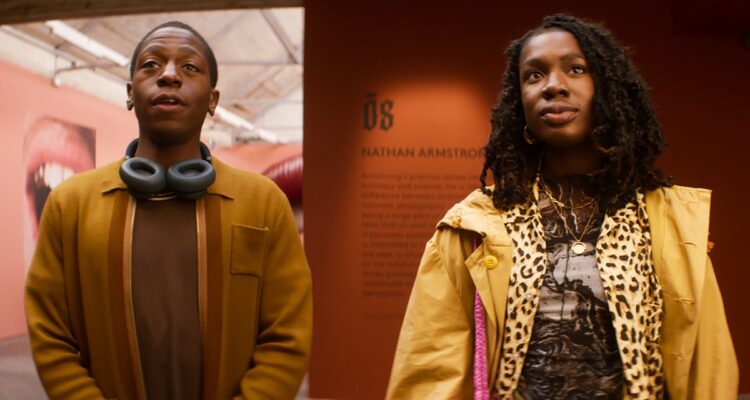Raine Allen-Miller’s “Rye Lane,” her directorial feature debut, is a wonder. Not since Spike Lee introduced the world to Bed-Stuy, has a Black director so seamlessly embedded viewers into the verve and flavor of their neighborhood. The epicenter of the seismic impact in “Rye Lane” resides in the South London neighborhood of Peckham. It concerns the vulnerable Dom (David Jonsson) and the outgoing Yas (Vivian Oparah), two young Black people getting over difficult breakups.
“Rye Lane” begins with an audacious overhead pan looking down into a series of stalls, filled with scenes of defecation, vomiting, sex, and more. Allen-Miller’s eyes settle upon Dom, unsuccessfully trying to muffle his weeping in the bathroom as he cycles through pictures of his ex and best friend now happily living together. Yas encounters Dom there, and the pair traverse together for a day on the town.
READ MORE: 25 Most Anticipated Films At The Sundance Film Festival
Allen-Miller doesn’t waste much time charting the shared delights of these two unlikely sweethearts. Running at a compact 82 minutes, the rom-com is a rich and vital love story that breaks the mold with its visual acumen and bright spirit. “Rye Lane” doesn’t gesture toward an awkward cool; it’s an effortlessly cool picture that finds glee in the sights and sounds of these characters’ lush surroundings.
The oblique lens capturing the unforced levity of Dom and Yas is key: Allen-Miller often opts for a fish-eyed lens. Not only imbuing the compositions with a bowed, playful aesthetic but allowing viewers to take in every corner of their world. While Dom and Yas walk through the Rye Lane Mall, sharing the insecurities that live so perceptively on the surface of their faces and bodies, our eyes are flooded with sights of tantalizing food, shoe stores, and bizarre characters (a hilarious cameo involving “Love Actually” resides in this sequence). We also take in the effervescent hues (potent reds, blues, and yellows), the stylish street art, and the sharp fashions of the area. Similar to the aforementioned Lee, Allen-Miller gives us a special invitation to the indelible life on display, which to locals might feel familiar, but to outsiders, feels like learning a special secret between friends.
Nathan Bryon and Tom Melia’s side-splitting script is also a warm hug of swift humor, tinged with cozy romance. Both Jonsson and Oparah execute the intoxicating patter shared by two people falling in love with aplomb. They also grant their characters knowing instability without its fiery emergence ever feeling contrived. There isn’t a scene—from Dom and Yas imagining themselves as karaoke gods, to them visiting a delicious cookout, to them walking through a tranquil park—where Jonsson and Oparah aren’t an otherworldly ball of charm. The rarity of immediately knowing you’re seeing two breakout performers who will be gracing our screens for years to come is the added bubbly to this ebullient celebration of two lovebirds.
Sometimes, tucked away in the popping soundtrack (featuring A Tribe Called Quest and Salt-N-Pepa) and the film’s Hype Williams aesthetic, particularly the director’s use of lighting in “Belly,” is a plot that loses some of its runaway speed when the more ready-made genre tropes fall into place. But the vibe that Allen-Miller creates brims with so much assurance, we can’t help but luxuriate in even its slower parts.
We progress to the ending you expect. We touch familiar emotions. We are granted a soft comfort, rendered to infinite rewatchability. We know “Rye Lane” is poised to be the best, most delightful rom-com of the year. But most of all, by the time the credits roll on “Rye Lane,” we know that this is Allen-Miller’s first great film. And it won’t be her last. [A-]
Follow along with all our coverage of the 2023 Sundance Film Festival.

